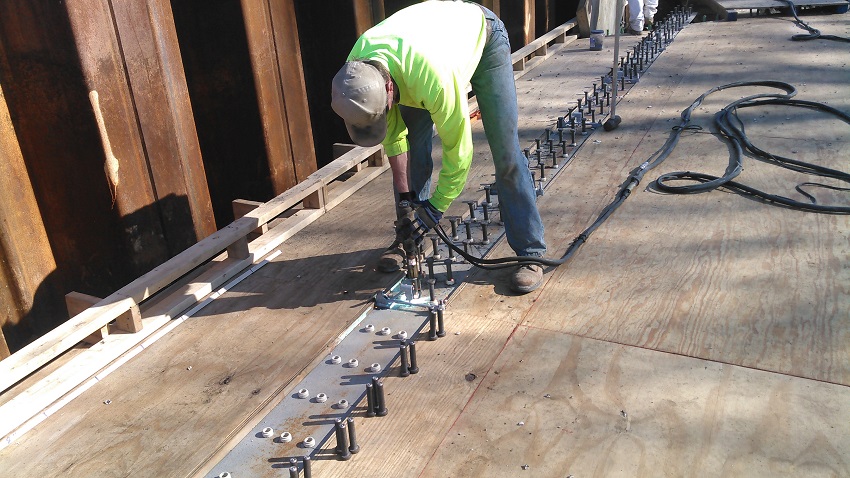Introduction: What is Stud Welding?
Stud welding is a process of joining two metals together using a metal stud as the joining element. This process joins a wide range of metals and alloys. These include both ferrous and non-ferrous materials. The most common types of stud welding are arc stud welding and capacitor discharge (CD) welding. Arc stud welding uses an electric arc to melt the end of the metal stud. While CD welding uses an electrical discharge to create heat to weld the metal together. Both processes create strong, reliable welds that are used in many industries. Examples include automotive, aerospace, and construction.
Types of Studs Used in Stud Welding.
Different types of studs are available to provide a strong, reliable connection. Threaded studs, shear connectors and headed studs are the most commonly used types of studs in stud welding.
Threaded studs have threads that allow them to be screwed into place. This makes them ideal for applications where the component needs to be quickly and easily adjusted or removed. Shear connectors have a tapered head which allows them to be locked into place when welded. This provides an extra secure hold. Lastly, headed studs have an enlarged head which helps distribute the load evenly across the welded joint. This helps to prevent it from slipping out of place over time.
The Components of a Typical Stud Welding Setup.
A typical stud welding setup consists of an arc or capacitor discharge welding unit. This includes a power supply unit, welding gun, and other components such as electrodes and fixturing. The arc or capacitor discharge welder provides the heat needed to melt the metal studs. While the power supply unit supplies the required amount of electricity for the process. With these components in place, it becomes possible to produce strong welds that are durable and reliable in any application.
Industry Applications for Stud Welding.
Stud welding is an efficient and cost-effective method of attaching metal studs to a base material. It is used in a variety of industries, including automotive, construction, and aerospace. Stud welding provides superior strength and sturdiness for construction projects. This process is useful for attaching components to a base material quickly and easily in the automotive industry. It’s advantageous for applications where access is restricted to the reverse side of an assembly. Such as mounting rails, instruments, and circuit boards. It also offers increased safety for the workers involved across all sectors.
Safety Considerations when Using a Stud Welder.
Stud welding requires the use of specialized tools, such as a stud welder, and involves many safety considerations. When using a stud welder, it is important to wear protective eyewear and PPE. Also, consider using appropriate shielding gases. It’s also important to ground the workpiece before beginning any welding process. Following these safety precautions can help ensure a smooth welding process, and that no one is injured in the process.



comments
Pingback: Essential Beginner’s Guide to Stud Welding – Ride-gear-up.com
Pingback: Essential Beginner’s Guide to Stud Welding – Tracktodirt.com
Pingback: Essential Beginner’s Guide to Stud Welding – Mynewcaraccessories.com